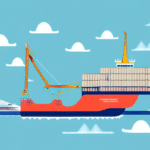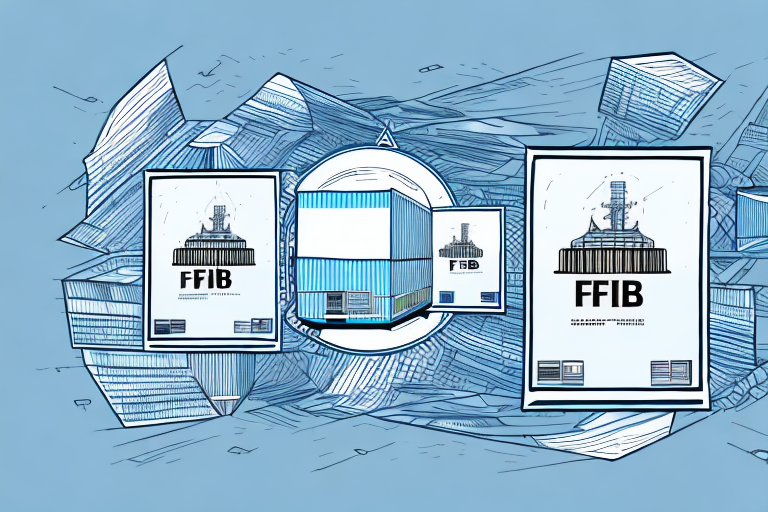Common Shipping Terms in International Trade
International trade involves navigating a myriad of shipping terms that define the responsibilities and risks of both buyers and sellers. Understanding these terms is crucial for efficient logistics management.
Freight on Board (FOB)
FOB signifies the point at which the ownership and liability of goods transfer from the seller to the buyer. For instance, under FOB Port of Shanghai, the seller delivers the goods to the specified port, after which the buyer assumes all risks and costs.
Cost, Insurance, and Freight (CIF)
CIF includes the cost of goods, insurance, and freight to the destination port. This term provides a more comprehensive pricing structure, reducing the buyer's burden in managing insurance and transport logistics.
Delivered Duty Paid (DDP)
DDP places the maximum responsibility on the seller, who must handle all costs and risks associated with delivering the goods to the buyer’s location, including customs duties and taxes. This term simplifies the process for buyers but requires sellers to be well-versed in the destination country’s regulations.
Ex Works (EXW)
EXW minimizes the seller’s obligations by requiring the buyer to handle all transportation and export procedures. This term is beneficial for buyers who prefer to control the shipping process.
Choosing the Right Shipping Method for Your Business
Selecting the appropriate shipping mode is pivotal for balancing cost, speed, and reliability. The primary shipping methods—air, sea, and land—each offer distinct advantages.
Air Shipping
Air freight is the fastest shipping method, suitable for perishable or high-value goods. According to the International Air Transport Association (IATA), air freight accounts for approximately 35% of world trade by value but only 1% by volume, highlighting its role in transporting valuable goods quickly.
Sea Shipping
Sea freight is cost-effective for large, bulk shipments. It is ideal for non-urgent goods and offers a lower environmental impact compared to air shipping. The World Shipping Council reports that about 90% of global trade is carried by sea.
Land Shipping
Land transport, primarily via trucks and trains, is best suited for regional deliveries and offers flexibility in door-to-door service. It is often used in conjunction with other modes in intermodal transportation to enhance efficiency.
Intermodal Transportation
Combining multiple shipping modes, intermodal transportation leverages the strengths of each method, potentially reducing costs and transit times. For example, goods may be transported by truck to a port, shipped by sea, and then delivered by rail.
Understanding Freight Charges and Negotiation Strategies
Freight charges significantly impact the overall cost of goods. Factors such as transportation mode, distance, weight, and volume all play a role in determining these costs.
Calculating Freight Charges
Freight costs are influenced by the Incoterms, the nature of the cargo, and the chosen shipping method. For example, air freight is more expensive than sea freight but offers faster delivery times. Businesses must evaluate their priorities to select the most cost-effective option.
Negotiating Better Rates
Establishing strong relationships with carriers and increasing shipping volumes can lead to more favorable rates. Utilizing technology for shipment tracking and optimizing routes also contributes to cost savings. According to the Forbes Technology Council, businesses can save up to 15% on shipping costs through effective negotiation strategies.
The Role of Customs and Shipping Documentation
Customs regulations and proper documentation are critical for seamless international shipping. Non-compliance can result in delays, fines, or shipment rejections.
Essential Shipping Documents
- Commercial Invoice: Details the transaction between buyer and seller, including the description, value, and terms of sale.
- Bill of Lading: A legal document issued by the carrier, confirming receipt of cargo for shipment.
- Packing List: Provides information on the contents, packaging, and weight of each package in the shipment.
- Certificate of Origin: Verifies the country where the goods were manufactured, which may affect tariffs and duties.
Customs Compliance
Understanding the destination country’s customs regulations is essential. Tools like the U.S. Customs and Border Protection (CBP) provide resources for compliance. Hiring a customs broker can also streamline the process by handling documentation and regulatory requirements on behalf of the business.
Managing Shipping Logistics Effectively
Effective logistics management ensures that shipments are delivered on time, within budget, and in good condition. Implementing best practices can enhance operational efficiency and reduce risks.
Best Practices for Logistics Management
- Strategic Carrier Partnerships: Collaborating with reliable carriers can improve service quality and negotiate better rates.
- Advanced Shipment Tracking: Utilizing real-time tracking technologies allows businesses to monitor shipments and address issues proactively.
- Contingency Planning: Developing plans for potential disruptions, such as natural disasters or political instability, ensures business continuity.
Technology Integration
Adopting technologies like Internet of Things (IoT) devices and advanced analytics can optimize routes, predict maintenance needs, and enhance overall supply chain visibility.
Future Trends and Innovations in the Shipping Industry
The shipping industry is continually evolving with advancements in technology and shifts in global trade dynamics. Staying abreast of these trends can provide a competitive edge.
Automation and Robotics
Automation in ports and warehouses speeds up processing times and reduces human error. Robotics are increasingly used for loading, unloading, and sorting goods, leading to greater efficiency and lower operational costs.
Sustainability Initiatives
Environmental sustainability is becoming a priority, with the industry adopting greener practices such as using alternative fuels, improving energy efficiency, and implementing carbon offset programs. The United Nations Sustainable Development Goals (UN SDGs) emphasize the importance of sustainable shipping practices.
Digital Transformation
Digital platforms and blockchain technology enhance transparency and security in transactions. Blockchain, for instance, provides an immutable ledger for tracking shipments, reducing fraud, and ensuring data integrity.
Innovations in Delivery Methods
Emerging delivery methods like drones and autonomous vehicles offer potential solutions for last-mile delivery challenges, particularly in remote or densely populated urban areas.
Conclusion
Mastering the complexities of international shipping is essential for business success in the global marketplace. By understanding key shipping terms, selecting the right methods, managing logistics efficiently, and staying informed about industry innovations, businesses can optimize their supply chains and achieve their international trade objectives. Investing in technology, building strong carrier relationships, and prioritizing sustainability will further enhance operational effectiveness and competitiveness.




















